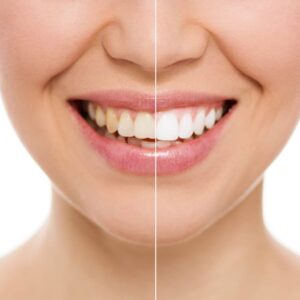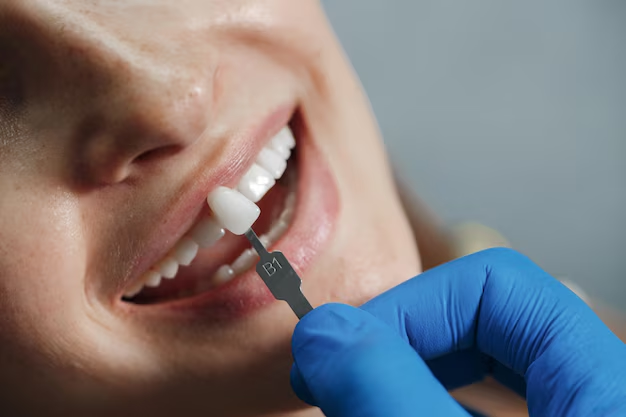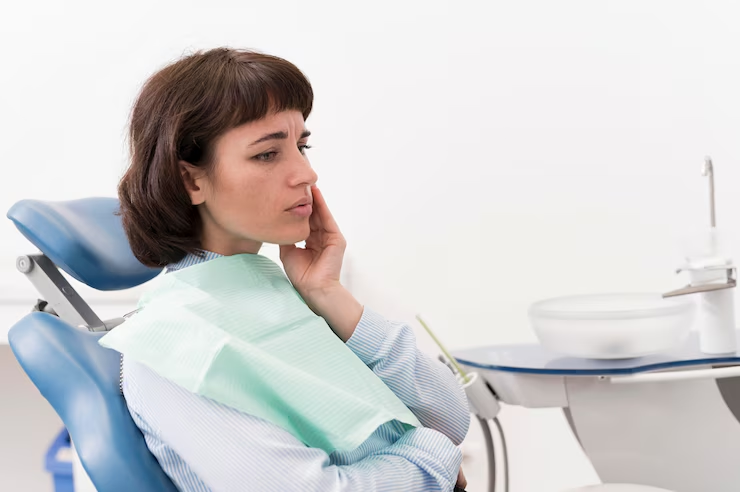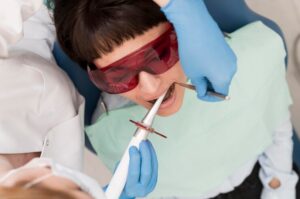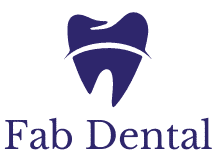Invisalign has revolutionized the field of orthodontics, offering a clear and convenient alternative to traditional metal braces. This modern solution has gained immense popularity for its discreet appearance and effectiveness in straightening teeth. As more individuals seek to improve their smiles with minimal impact on their daily lives, Invisalign stands out as a preferred choice for many.
In this blog post, we aim to address the top 10 questions about Invisalign, providing readers with a comprehensive guide and clear aligner explained in detail. From the initial consultation to the final results, we understand that patients have numerous Invisalign FAQs and common Invisalign queries. Whether you’re considering Invisalign treatment or simply want to learn more, our Invisalign information will offer valuable insights into the process details, advantages and disadvantages, and what you can expect during the journey towards a straighter smile.
Through this post, we’ll delve into the orthodontic treatment answers you’ve been searching for. We’ll cover everything from the basic Invisalign tips to in-depth dental aligner questions, ensuring that by the end of this read, you’ll feel more informed and confident about whether Invisalign is the right choice for you. So let us guide you through the Invisalign process and help you set the right expectations for your own orthodontic journey.
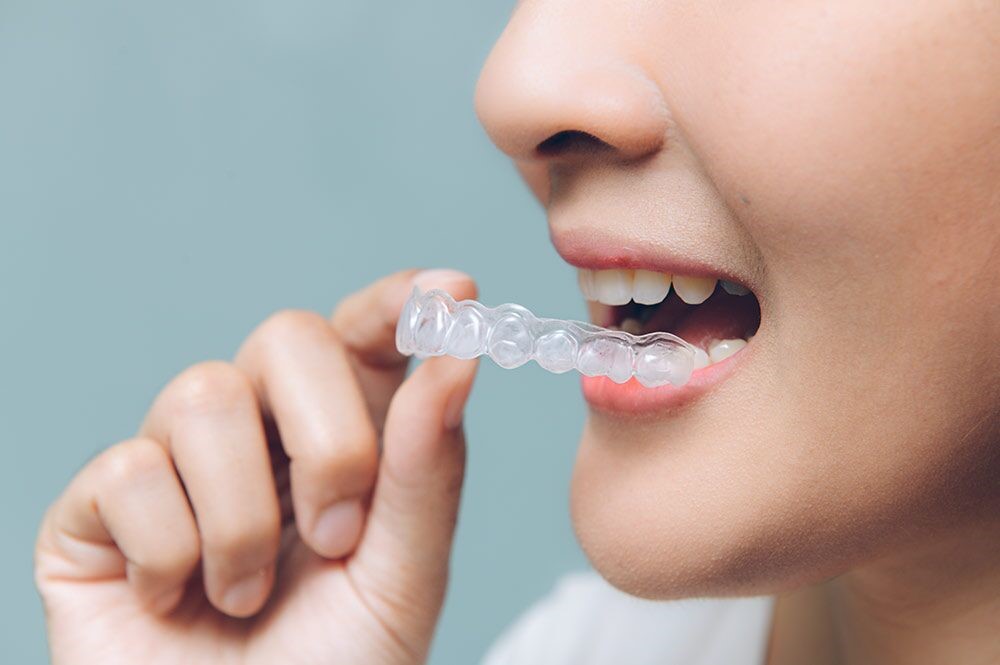
What is Invisalign and How Does It Work?
Invisalign is an innovative solution for teeth straightening that has transformed the world of orthodontic treatment. Unlike traditional dental braces, Invisalign consists of a series of custom-made, clear plastic aligners that are virtually invisible when worn. The technology behind these aligners leverages 3D computer imaging to map out the entire treatment plan from the current positioning of your teeth to the final desired position.
The Invisalign process is straightforward. After an initial consultation, where common Invisalign queries are addressed, a dental professional takes impressions of your teeth, which are then used to create a digital teeth-straightening plan. This plan details the gradual shifting of teeth, and based on this, a series of aligners are produced. Each aligner is worn for about two weeks before moving on to the next set in the series, gradually guiding your teeth into their proper alignment. The aligners are removable, allowing for easier eating, brushing, and flossing, and offer a comfortable alternative to metal braces.
Patients often have a plethora of Invisalign FAQs, ranging from the treatment’s duration to the types of dental misalignments it can correct. To clarify, the duration of Invisalign treatment varies depending on the individual’s needs but typically ranges from 12 to 18 months. Invisalign is capable of correcting a variety of dental issues, including overbites, underbites, crossbites, gap teeth, and crowded teeth, making it a versatile option for many seeking a straighter smile.
Invisalign has several advantages over traditional braces. The clear aligners are discreet, providing an aesthetic advantage for those concerned about the visibility of orthodontic devices. The removability of Invisalign aligners also offers a practical benefit, as it allows for normal oral hygiene practices and dietary choices without the restrictions often associated with metal braces.
In summary, Invisalign is a modern orthodontic treatment that provides a clear, convenient, and comfortable option for those looking to improve their smile. With proper consultation and adherence to the treatment plan, patients can achieve their desired outcomes with minimal impact on their daily lives. For more detailed Invisalign information and Invisalign treatment questions, it is advisable to schedule an Invisalign consultation with a qualified dental professional.
Invisalign Treatment Duration
When considering Invisalign to achieve the perfect smile, one of the most common Invisalign queries involves the duration of the treatment. The length of time you will need to wear Invisalign clear aligners can vary significantly depending on several factors. These include the complexity of your orthodontic needs, how well you follow your orthodontist’s instructions, and the specific goals for your smile. Patients can generally expect the treatment to last anywhere from 12 to 18 months, but it’s not uncommon for some cases to require a shorter or longer period.
The Invisalign process details reveal that, unlike traditional dental braces, Invisalign aligners are designed for convenience and flexibility. But to ensure the treatment is effective, it’s crucial to wear the aligners for the recommended 20 to 22 hours per day. Deviating from this can extend the treatment time. Additionally, Invisalign treatment questions often arise regarding the adjustments needed throughout the process. Regular consultations and aligner changes are essential in guiding your teeth to their proper positions, and missing these appointments can also lead to delays.
Here’s a closer look at some of the factors that influence the Invisalign treatment timeline:
Complexity of Dental Issues: The more complex your orthodontic issues, such as severe overbite or underbite, the longer the treatment may take.
Adherence to Treatment Plan: Wearing aligners for the prescribed hours each day and changing them on schedule is crucial for staying on track.
Age of the Patient: Younger patients may experience faster results due to the malleability of their jawbone.
Invisalign Consultation Frequency: Regular check-ups allow the orthodontist to monitor progress and make adjustments as needed.
Lifestyle and Habits: Certain habits, like smoking or frequently removing the aligners, can impede progress and extend treatment duration.
Understanding these factors and maintaining open communication with your orthodontist can help set realistic Invisalign expectations and achieve the best results. Always seek professional Invisalign information and consult with your orthodontist to understand your specific treatment plan and how to optimize your Invisalign experience.
Remember, each smile is unique, and so is every Invisalign journey. Embrace the process, and look forward to the transformative results of your orthodontic treatment.
Comfort and Pain Management with Invisalign
When considering orthodontic treatment, comfort and pain management are crucial factors that patients often worry about. Invisalign, as a modern approach to teeth straightening, brings forth the question of how it compares in these aspects to traditional dental braces. Let’s address some of the common queries regarding the comfort levels of Invisalign treatment, methods of pain management, and what patients typically experience during their orthodontic journey with clear aligners.
User-Friendly Design: Invisalign aligners are crafted from smooth, flexible plastic that is custom-fitted to the patient’s teeth. This user-friendly design significantly reduces the incidence of discomfort and mouth abrasions that are often associated with the metal brackets and wires of conventional braces. Patients find this aspect of Invisalign particularly advantageous, as it allows them to continue with their daily routines without additional oral discomfort.
Pain Management Techniques: Although Invisalign is designed for comfort, some patients may experience mild pain or pressure, especially when switching to a new set of aligners. This is a normal part of the teeth straightening process. Pain management can often be achieved through over-the-counter pain relievers, cold compresses, and by chewing on Invisalign chewies which can help the aligners fit better and reduce discomfort.
Patient Testimonials and Experiences: Invisalign information often includes testimonials from individuals who have undergone the treatment. A common theme is the relative comfort compared to traditional braces, with many reporting that any initial discomfort subsides quickly. Clear aligners explained by actual users provide valuable insights into the real-life experiences of Invisalign treatment.
Consultation and Guidance: During the Invisalign consultation, orthodontists answer all Invisalign FAQs and provide a comprehensive Invisalign guide, including what to expect in terms of comfort and pain. This personalized approach ensures that patients are well-informed and can manage their expectations effectively.
Comparative Comfort with Braces: When it comes to teeth straightening FAQ, a frequent one is about the difference in comfort between Invisalign and braces. Invisalign’s clear aligners are often favored for their comfort and convenience, as they lack the sharp edges and tightening procedures associated with braces. This makes Invisalign a preferred choice for those concerned about oral discomfort during orthodontic treatment.
To sum up, Invisalign treatment is generally associated with a high level of comfort and minimal pain, making it an attractive option for those seeking a hassle-free path to a straighter smile. The availability of Invisalign tips and comprehensive care from orthodontists further ensures that patient concerns are addressed, and the process is as smooth as possible. With the right information and expectations, patients can embark on their Invisalign journey with confidence and ease.
Wearing Schedule and Lifestyle Adjustments
Invisalign, the popular clear aligner system, has become a preferred choice for those seeking teeth straightening without the conspicuous appearance of traditional braces. One of the most common Invisalign queries revolves around the daily wear time and how it adapts to a patient’s lifestyle. It is recommended that Invisalign aligners are worn for 20 to 22 hours a day to achieve the best results. This commitment is vital to the success of the treatment, but the flexibility of Invisalign allows patients to maintain their usual routines with minimal interruption.
While the Invisalign treatment questions often include concerns about lifestyle adjustments, the reality is that the aligners are designed to align with the patient’s life seamlessly. Here are some insights and Invisalign tips to help users integrate Invisalign into their daily schedules:
Consistency is Key: For effective teeth straightening, it is essential to wear the aligners as much as possible. Only remove them for eating, drinking anything other than water, brushing, and flossing.
Meal Times: Invisalign aligners should be removed during meals, which offers the freedom to enjoy all types of food without the dietary restrictions typically associated with dental braces.
Oral Hygiene: Maintaining oral hygiene is straightforward with Invisalign. After meals, simply brush and floss your teeth before reinserting the aligners, ensuring that your orthodontic treatment progresses in a clean environment.
Social and Professional Settings: Due to their clear nature, Invisalign aligners are hardly noticeable, making them an ideal orthodontic treatment for both social and professional settings.
Physical Activity: For those with an active lifestyle, Invisalign aligners can typically be kept in during physical activity. However, for contact sports, it’s advisable to consult with an Invisalign guide or a dental professional.
Invisalign offers the advantages of being less intrusive on a patient’s lifestyle while effectively addressing their dental alignment concerns. The ability to remove the aligners briefly for special occasions or for maintaining oral health easily makes Invisalign a versatile and practical solution for many. As with any medical treatment, it’s important to consult with a professional to understand the full Invisalign expectations and ensure that it is the right choice for your specific orthodontic needs.
Can I remove my Invisalign aligners if I have an important event or meeting?
Yes, one of the Invisalign advantages is the ability to remove your aligners for short periods, such as during important events or meetings. This flexibility allows you to maintain your professional appearance without interrupting your treatment progress. However, it’s crucial to remember that the aligners should be worn for the recommended 20 to 22 hours per day to achieve the best results.
For more detailed Invisalign information and patient concerns, it’s recommended to schedule an Invisalign consultation. Invisalign Official Website
Eating and Drinking with Invisalign Aligners
Invisalign aligners offer a discreet and convenient way to straighten your teeth, but they also require some special considerations when it comes to eating and drinking. One common query among Invisalign patients concerns how to maintain oral hygiene and aligner care during meals. To help clear any doubts and provide a Invisalign guide that ensures the effectiveness of your orthodontic treatment, here are some tips:
Brush and Rinse After Eating: Before you place your aligners back onto your teeth, it’s crucial to brush and floss thoroughly. Food particles can get trapped, leading to bacteria buildup and potential dental issues.
Avoid Hot Beverages: Drinking hot beverages while wearing your aligners can warp their shape, affecting the Invisalign process details. Always remove your aligners before consuming hot drinks.
Mind the Staining Foods: Clear aligners are transparent, but they can become discolored by certain foods and drinks. To maintain their invisibility, steer clear of items like coffee, tea, red wine, and turmeric.
Stay Hydrated with Water: Water is the best drink to have while wearing Invisalign aligners. It keeps you hydrated without risking damage to the aligners or causing stains. Plus, it helps rinse away any stray food particles.
Chew Carefully: If you choose to eat with your aligners in, which is generally not advised, chew very carefully. Hard or sticky foods can damage the aligners. It’s best to remove them during meals to avoid any Invisalign disadvantages.
By following these Invisalign tips, you can ensure that your treatment is as effective as possible and that your aligners remain clean and discreet. Always remember to carry your aligner case with you to store them safely while eating, and consult with your dentist if you have any specific Invisalign patient concerns.
Cleaning and Maintaining Your Invisalign Aligners
Maintaining the cleanliness and integrity of your Invisalign aligners is crucial for ensuring optimal oral hygiene and the effectiveness of your orthodontic treatment. As a valuable component of your teeth straightening journey, it’s important to adhere to best practices for cleaning Invisalign aligners. This not only extends the life of the aligners but also prevents dental issues that may arise from improper care. Here are some key guidelines to help you maintain your Invisalign aligners properly:
Daily Cleaning Routine: Start and end your day by gently brushing your aligners with a soft-bristled toothbrush and clear, antibacterial soap. Avoid using colored soaps or toothpaste, as they can discolor your aligners. This routine helps to remove plaque and bacteria that can accumulate on the aligners, ensuring they remain invisible and odor-free.
Rinsing After Removal: Every time you remove your aligners to eat or drink, make it a habit to rinse them under lukewarm water. This simple practice prevents saliva and plaque from drying on the aligners, which can cause a breeding ground for bacteria.
Soaking for Deep Cleaning: Once a day or at least a few times a week, soak your aligners in a denture cleaner or Invisalign cleaning crystals. This helps to keep them clear and free from any stubborn buildup that daily brushing might miss.
Avoiding Harmful Substances: Never expose your Invisalign aligners to hot water or harsh chemicals. High temperatures can warp the plastic, and harsh chemicals can erode the aligner’s surface. Stick to recommended cleaning solutions and lukewarm water.
Storing Properly: When not in use, store your aligners in the protective case provided. This prevents them from getting lost, damaged, or exposed to germs and other contaminants.
By following these Invisalign tips, you can ensure that your aligners stay clean, clear, and functional throughout your orthodontic treatment. Remember, maintaining your aligners is just as important as wearing them, and proper care contributes to the overall success of your treatment.
FAQ 6: Can I use toothpaste to clean my Invisalign aligners?
Toothpaste is not recommended for cleaning Invisalign aligners because many toothpastes contain abrasive ingredients that can create micro-scratches on the aligner’s surface, making them look dull and more visible. Instead, use clear, antibacterial soap or Invisalign cleaning crystals for a safe and effective clean.
Speech and Invisalign: What to Expect
When considering Invisalign for teeth straightening, a common Invisalign query that patients have relates to speech. It’s natural to wonder if these clear aligners will affect the way you speak. Initially, some individuals might notice a slight lisp or change in their enunciation. This is one of the temporary effects on speech that can occur as your mouth adjusts to having the Invisalign trays in place.
Here’s what you should know about the adaptation process and what to expect when it comes to speech and Invisalign:
Initial Adjustment Period: For the first few days, you may discover that your speech is slightly different. Words that require more precise tongue placement, such as those starting with ‘s’ or ‘f’, might sound a bit off. This is a part of the Invisalign treatment questions that many patients have, and it’s completely normal.
Practice Makes Perfect: As with any new orthodontic treatment, practice is key. Many Invisalign tips include speaking out loud and practicing tricky phrases. The more you talk, the quicker your tongue will adapt to the aligners, and any initial lisping will subside.
Temporary Changes: Remember that any speech impediment is usually temporary. Most Invisalign patients report that within a few weeks, they can speak clearly and confidently with their aligners in place, as part of their Invisalign expectations.
Discreet Treatment: Unlike traditional dental braces, Invisalign’s clear design makes them far less noticeable, and any speech changes are also less noticeable, which is one of the Invisalign advantages.
Consultation with Your Orthodontist: If you are concerned about the impact on your speech, it’s important to discuss this during your Invisalign consultation. They can provide personalized Invisalign information and reassurance.
Remember, adapting to Invisalign is a process, and your comfort with the aligners will improve over time. If you have any further Invisalign FAQs or concerns, be sure to bring them up during your Invisalign consultation. Clear communication with your orthodontist ensures that you’re fully informed about all aspects of your Invisalign treatment—speech included.
Invisalign Cost and Insurance Considerations
When considering Invisalign as a teeth straightening option, one of the primary concerns for many patients is the cost of treatment and how much of it can be covered by insurance. Invisalign, often preferred for its aesthetic appeal and convenience over traditional braces, can come with a significant price tag. However, understanding the financial aspect of Invisalign treatment can help in planning and managing the expenses effectively.
Treatment Cost Breakdown: The cost of Invisalign treatment can vary based on several factors, including the complexity of the case, the duration of treatment, and the geographic location of the orthodontist’s office. Typically, the price range for Invisalign can be anywhere from $3,000 to $8,000. Some orthodontists offer a detailed cost breakdown during the initial consultation, which includes the expenses for the custom aligners, routine check-ups, and any additional adjustments needed.
Insurance Coverage: Many dental insurance plans cover a portion of orthodontic treatments, including Invisalign. It’s crucial to check with your insurance provider to understand the extent of coverage for clear aligners. Some insurers may have a cap on the amount they will reimburse for orthodontic treatments, or they may cover a percentage of the cost up to a certain limit. Ensure to get this information beforehand to avoid unexpected expenses.
Flexible Spending Accounts (FSA): If you have a Flexible Spending Account through your employer, you can use pre-tax dollars to pay for eligible dental expenses, including Invisalign. This can result in substantial savings, as it lowers your taxable income. It’s important to plan your FSA contributions according to your treatment plan to make the most out of this benefit.
Payment Plans: Most dental practices offer payment plans to make Invisalign treatment more affordable. These plans typically allow you to spread the cost over several months, making it easier to manage financially. Some practices offer in-house financing options, while others may work with third-party finance companies.
Comparing Costs with Traditional Braces: When evaluating the cost of Invisalign, it’s helpful to compare it with the cost of traditional braces. Although Invisalign may be more expensive upfront, it offers advantages such as removability, less visibility, and often a shorter treatment period, which can offset the difference in cost for many patients.
Financial Planning: Planning for Invisalign treatment requires a clear understanding of all potential costs involved. Having a discussion with your orthodontist about the payment options and seeking advice from a financial planner can help in creating a viable plan that fits your budget.
In conclusion, while the costs associated with Invisalign treatment can be a concern for patients, there are various ways to make it more manageable. Insurance coverage, FSA benefits, payment plans, and careful financial planning are all viable strategies to address the financial aspect of obtaining a healthier, straighter smile with Invisalign.
Remember, it’s always beneficial to ask your orthodontist about any current promotions or discounts that may be available for Invisalign treatment. For more Invisalign FAQs and information, be sure to check out our comprehensive Invisalign Guide and explore common Invisalign queries to make an informed decision about your orthodontic treatment.
Advantages of Invisalign Over Traditional Braces
When it comes to orthodontic treatment, the choice between Invisalign and traditional braces is a common dilemma for many patients. Invisalign, known for its clear aligners, presents a modern approach to teeth straightening that offers several benefits over the conventional metal or ceramic braces. Here are some of the advantages that make Invisalign a preferred option for those seeking an aesthetic and convenient solution to their dental alignment issues.
Aesthetic Appeal: One of the most compelling reasons to choose Invisalign is its near-invisibility. The clear aligners are designed to be discreet, allowing patients to undergo orthodontic treatment without the self-consciousness often associated with traditional braces. This feature is particularly appealing to adults and teens who are concerned about their appearance during treatment.
Comfort: Invisalign aligners are made from smooth plastic and custom-fitted to the individual’s teeth, reducing the likelihood of irritation to the gums and the inside of the mouth. Unlike traditional braces, which can have sharp edges and require tightening, Invisalign offers a more comfortable experience with less frequent visits to the orthodontist for adjustments.
Convenience: The removable nature of Invisalign aligners means patients can maintain their usual diet and oral hygiene routine. There’s no need to avoid certain foods or struggle with cleaning around wires and brackets. This not only simplifies daily life but also promotes better dental health during treatment.
Predictable Treatment Process: Utilizing advanced 3D imaging technology, Invisalign allows patients and orthodontists to visualize the entire treatment plan from start to finish. Patients can see the expected progression of their teeth alignment and have a clearer understanding of treatment expectations, which is often not as transparent with traditional braces.
Reduced Treatment Duration: In certain cases, the duration of treatment with Invisalign can be shorter than that of traditional braces. While the timeframe varies depending on the complexity of the case, Invisalign’s efficient approach to teeth straightening can lead to quicker results for many patients.
In conclusion, Invisalign offers several advantages over traditional braces, addressing many common Invisalign queries and concerns patients may have. It combines aesthetic appeal, comfort, and convenience with a high-tech, predictable treatment process. Patients interested in Invisalign should consult with their orthodontist to discuss their own orthodontic treatment answers, as individual results may vary. Those considering Invisalign can look forward to an Invisalign guide that clearly explains the Invisalign process details, helping to manage Invisalign expectations and ensure they are well-informed about their choice in dental aligner therapy.
FAQ 9: Can Invisalign be used for all types of teeth alignment issues?
While Invisalign is suitable for many orthodontic cases, there are certain complex issues that may require traditional braces for optimal results. It’s essential for patients to have a detailed Invisalign consultation with their orthodontist to determine if clear aligners are an appropriate solution for their specific dental concerns.
Please note that the exact treatment duration and suitability of Invisalign may vary depending on individual cases, and it’s important for each patient to consult with their orthodontist. The information provided here is based on general advantages of Invisalign and does not replace professional advice.
Assessing Eligibility for Invisalign Treatment
When considering Invisalign as a solution for orthodontic treatment, it’s important to understand who the ideal candidates are and what conditions Invisalign can effectively correct. This clear aligner system is designed to address various dental concerns, but it may not be suitable for every individual. Invisalign treatment questions often revolve around eligibility, and here we aim to provide clear answers to common Invisalign queries.
Age Range: Invisalign is versatile and can be used for patients in a wide age range, typically from teenagers to older adults. The key requirement is that all permanent teeth have erupted, ensuring the aligners can be designed for a stable dental structure.
Mild to Moderate Corrections: Invisalign is most effective for mild to moderate dental misalignments, such as crooked teeth, gaps, and certain bite irregularities. It’s an excellent option within an Invisalign guide for those seeking an alternative to traditional braces.
Commitment to Treatment: Candidates must be willing to wear the aligners for the recommended 20-22 hours a day. This commitment is crucial for the success of the treatment, as it directly influences the Invisalign expectations for the outcome.
Dental Health: Good overall dental health is a prerequisite. Patients should not have any untreated cavities or gum disease before starting with Invisalign. A pre-treatment consultation will address these Invisalign patient concerns.
Complex Cases: For more complex orthodontic issues, such as severe overbites or underbites, traditional braces may be a more suitable option. Invisalign FAQs often include inquiries about the effectiveness in such cases, and it’s best to consult with an orthodontist.
Understanding these criteria will help in making an informed decision about whether Invisalign is the right choice for you or a family member. It’s always recommended to have a detailed Invisalign consultation with an orthodontic specialist to address any specific concerns and to assess individual suitability for this form of teeth straightening. Remember that while Invisalign offers many advantages, such as being nearly invisible and removable, weighing the potential Invisalign advantages and disadvantages is a crucial step in the process of achieving a healthier, straighter smile.
“Embarking on the journey to a more confident smile with Invisalign can often raise a sea of questions. As your dedicated oral health partner, I am thrilled to shed light on the path to straighter teeth. At Fab Dental, we believe informed patients are the happiest patients, and it’s my pleasure to ensure you have all the answers you need to make the best decision for your smile. So, let’s dive into the top 10 questions about Invisalign, paving the way to your dream smile with clarity and confidence.”
— Dr. Guneet Alag, DDS, FAGD, Fab Dental, Hayward, CA
FAQs: Top 10 Questions about Invisalign Answered
What is Invisalign and how does it work?
Invisalign is a modern orthodontic treatment that uses a series of clear, removable aligners to gradually straighten teeth. Unlike traditional braces, Invisalign aligners are made from a flexible thermoplastic material called SmartTrack®. Patients wear each set of aligners for about one to two weeks, allowing teeth to move little by little until they reach the desired position prescribed by their orthodontist or dentist.
Is Invisalign treatment suitable for everyone?
Invisalign can treat a wide range of orthodontic issues, including crowded teeth, gaps, overbites, underbites, and crossbites. However, it may not be suitable for more complex cases or severe misalignments. A consultation with an Invisalign-trained dentist or orthodontist is necessary to determine if you are a good candidate for the treatment.
How long does Invisalign treatment typically take?
The duration of Invisalign treatment varies from person to person, depending on the complexity of the case. On average, treatment can take anywhere from 12 to 18 months, but some people may see results in as little as 6 months. Your orthodontist or dentist will provide an estimated treatment timeline during your consultation.
How often do I need to wear my Invisalign aligners?
For optimal results, Invisalign aligners should be worn for 20 to 22 hours a day. They should only be removed for eating, drinking anything other than water, brushing, and flossing. Consistent wear is crucial to ensure the treatment stays on track.
Are Invisalign aligners painful?
Invisalign aligners may cause some discomfort, especially when switching to a new set. This feeling is typically described as pressure and is a sign that the aligners are working to move your teeth. The discomfort usually subsides within a few days of wearing the new aligners.
How do I clean and take care of my Invisalign aligners?
To clean your Invisalign aligners, rinse them in lukewarm water and brush them gently with a soft-bristled toothbrush. Avoid using hot water, as it can warp the plastic. Invisalign also offers cleaning crystals designed for deep cleaning. Additionally, maintain good oral hygiene by brushing and flossing your teeth before putting the aligners back in your mouth.
Can I eat and drink with Invisalign aligners in my mouth?
You should not eat while wearing Invisalign aligners, as food can damage them. However, you can drink water with the aligners in. For other beverages, it's recommended to remove the aligners to avoid staining them or trapping sugary liquids that can lead to tooth decay.
Will Invisalign affect my speech?
Some people may experience a slight lisp when they first start wearing Invisalign aligners. This is normal and usually temporary as your tongue adapts to the presence of the aligners. Most people find that their speech returns to normal within a few days to a week.
How much does Invisalign treatment cost?
The cost of Invisalign treatment can vary widely depending on the complexity of the case, the length of treatment, and geographic location. On average, Invisalign can cost anywhere from $3,000 to $8,000. Many dental insurance plans cover a portion of the treatment, and payment plans are often available.
What happens after Invisalign treatment is completed?
Once your Invisalign treatment is complete, you will likely need to wear a retainer to maintain your new smile. Your dentist or orthodontist will provide you with a retainer and instructions on how to use it. Initially, you may need to wear it all the time, but eventually, you might only need to wear it at night. Regular dental check-ups and good oral hygiene practices are also important to keep your smile looking its best.
Conclusion
As we wrap up this comprehensive guide, it’s important to recap the key points we’ve covered about Invisalign, the revolutionary orthodontic treatment that has transformed the smiles of millions. Throughout this post, we’ve addressed the top 10 questions that patients commonly ask, providing you with a clear and thorough Invisalign Information base. We’ve explored the advantages and potential concerns of Invisalign, compared it to traditional Dental Braces, and underscored what you can expect during the Invisalign Process.
Choosing Invisalign means opting for a convenient and less noticeable way to straighten your teeth. Unlike traditional braces, these Clear Aligners are virtually invisible and can be removed when needed, offering flexibility that fits into any lifestyle. From understanding the initial Invisalign Consultation to learning about the maintenance and care of aligners, we’ve aimed to answer your Common Invisalign Queries and equip you with valuable Invisalign Tips.
It’s essential to remember that every smile is unique, and therefore personalized advice from a qualified orthodontist is crucial. They can answer any additional Invisalign FAQs you may have, assess your individual needs, and help you understand the specific Invisalign Advantages and Disadvantages as they pertain to your case. An orthodontist can also provide insight into the Invisalign Expectations tailored to the specifics of your dental structure and treatment goals.
In conclusion, whether you’re just starting to consider Invisalign or are ready to take the next step, we encourage you to reach out to an orthodontist for a personalized Invisalign Guide. With the right Orthodontic Treatment Answers, you can make an informed decision and embark on the journey to a straighter, healthier smile with confidence. Remember to refer back to this blog post whenever you have Invisalign Patient Concerns or need a refresher on any aspect of the treatment. Your beautiful smile awaits!

